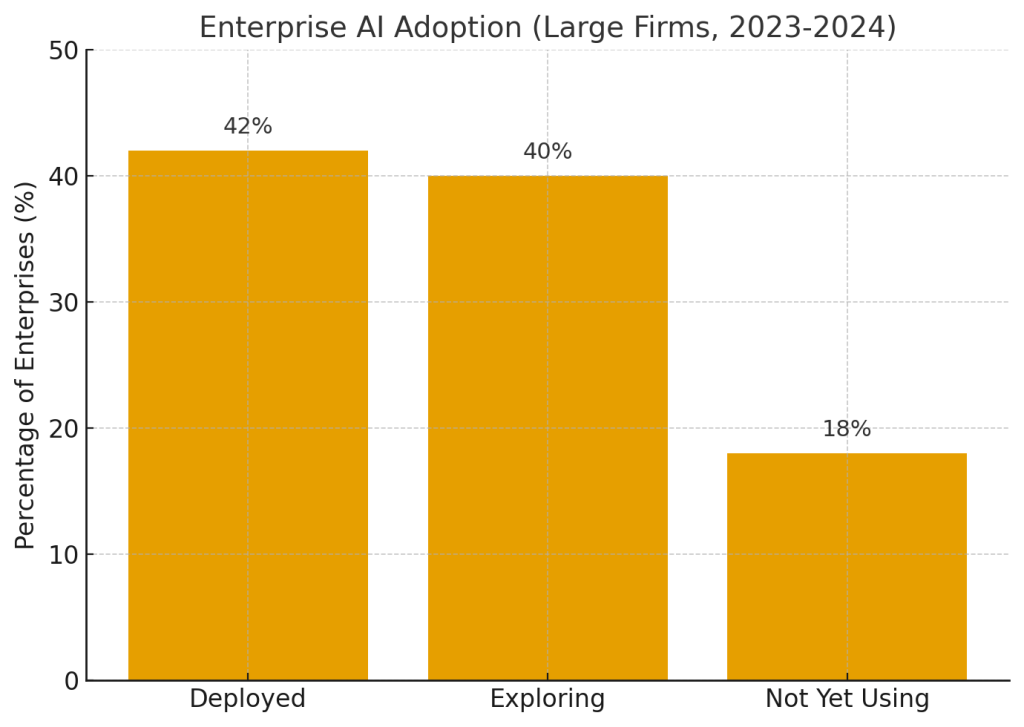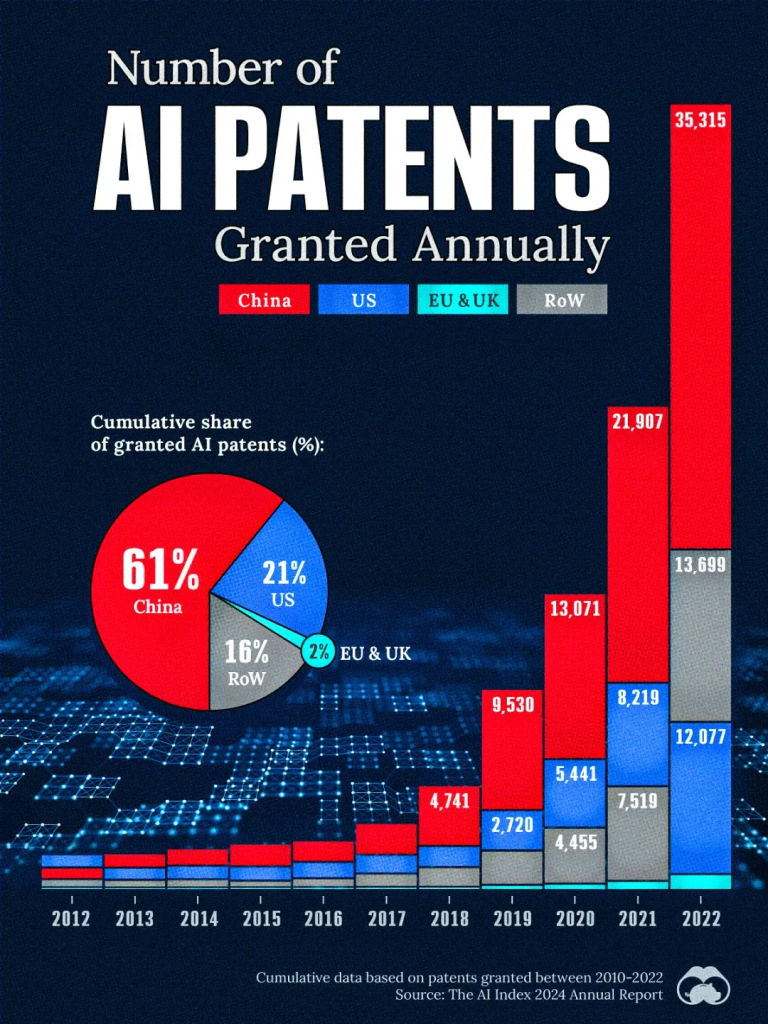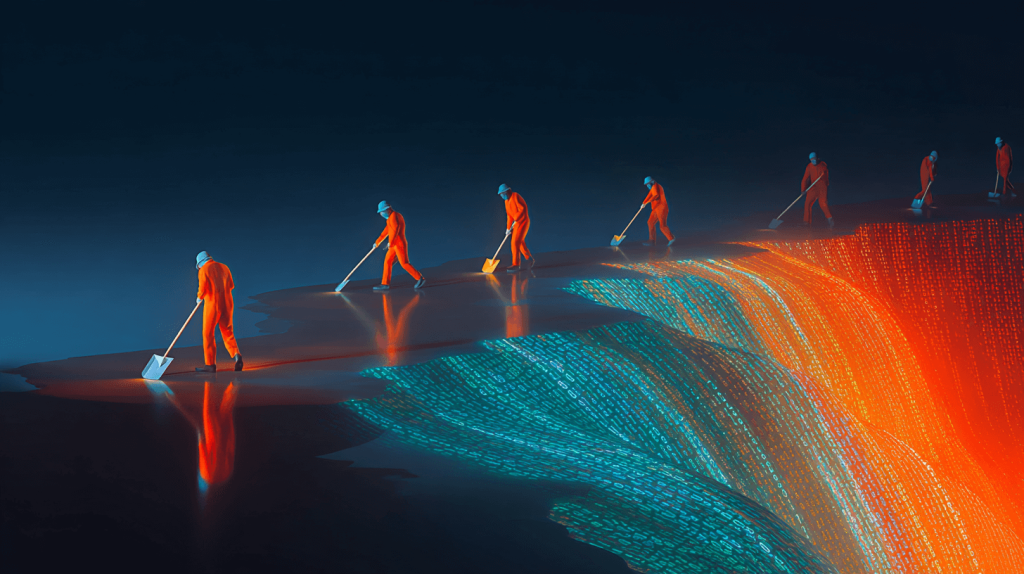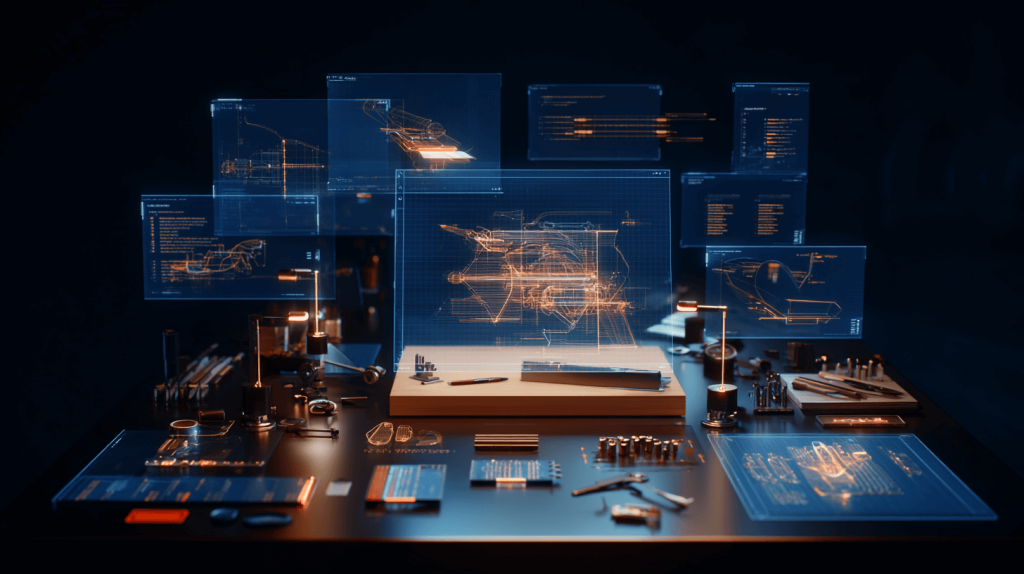ChatGPT reached 100 million users in just two months after launch – the fastest adoption of any consumer app in history. This unprecedented speed signals something profound: artificial intelligence has moved from experimental technology to essential infrastructure. This rapid adoption is part of the ongoing AI boom, which began with early advances, such as expert systems in the 1980s, and has accelerated since 2017 with breakthroughs in large language models and transformer architectures, leading to widespread public adoption and investment in the 2020s.
While most discussions focus on AI’s future potential, the reality is that ten breakthrough inventions have already reshaped how we work, diagnose diseases, create content, and navigate our world.
For SaaS founders and tech entrepreneurs, these AI breakthroughs represent both opportunity and urgency. Each innovation creates new patentable territory while simultaneously raising the stakes for intellectual property protection. The companies that understand how to protect their AI innovations today will control tomorrow’s competitive advantages.
Key Takeaways
The AI revolution isn’t coming – it’s here. In 2024, 42% of large enterprises had actively deployed AI solutions, while 28% of U.S. workers were already using AI tools, such as ChatGPT, in their jobs by early 2025, up from just 8% in 2023. These aren’t pilot programs anymore; they’re core business operations driving competitive advantage.

Figure 1: Enterprise AI Adoption (Large Firms, 2023–2024).
“42% of large enterprises have actively deployed AI, 40% are in exploration stages, and 18% have not yet engaged.”
Source: IBM Global AI Adoption Index 2024 (Morning Consult survey, IBM Newsroom, Jan 2024)
Relentless AI Progress: From neural networks to generative AI, breakthroughs such as deep learning, Transformer models, and GPT-4 have significantly expanded AI capabilities beyond recognition. The technology that seemed impossible five years ago now powers everyday tools millions use without thinking.
Patent Protection Urgency: China now accounts for about 61.1% of all AI-related patent grants globally, far outpacing the United States at around 20.9%. This shift in patent leadership has profound implications for tech startups seeking global market protection.
AI in Healthcare: As of late 2024, over 1,000 AI-enabled medical devices have been authorized by the FDA, transforming diagnostics from reactive to predictive. Hospitals like the Cleveland Clinic use AI tools to predict patient deterioration for timely intervention, literally saving lives through early warning systems.
Business Transformation: Despite massive adoption, an estimated 68% of enterprise data still goes unanalyzed, indicating vast untapped potential for AI-powered SaaS solutions. Across the business world, AI adoption is fundamentally transforming how organizations operate and develop strategies, reshaping the competitive landscape.
Introduction to AI
Artificial intelligence (AI) is the science and engineering of creating computer systems capable of performing tasks that traditionally require human intelligence, such as learning, reasoning, problem-solving, and decision-making. In recent years, the AI industry has experienced explosive growth, with AI technologies now embedded in everything from healthcare diagnostics and financial modeling to autonomous vehicles and personalized education platforms.
At the heart of these advancements are AI systems powered by machine learning algorithms and natural language processing, enabling computers to analyze vast amounts of data, recognize patterns, and interact with humans in increasingly sophisticated ways. As artificial intelligence AI becomes more deeply integrated into our everyday lives, it is revolutionizing the way we work, communicate, and solve complex problems.
However, the rapid evolution of AI also brings new challenges for patent law and intellectual property protection. As AI systems become more autonomous—capable of generating inventions or making decisions with minimal human intervention—questions arise about how to regulate their use and whether these systems themselves should be eligible for patent protection. For innovators and entrepreneurs, understanding the intersection of AI, patent protection, and regulatory frameworks is essential to safeguarding their competitive edge in a fast-moving technology landscape.
History of AI
The concept of artificial intelligence has roots that stretch back to ancient myths and legends, where stories of artificial beings endowed with intelligence or consciousness captured the human imagination. Yet, the modern era of AI began in the 1950s, when computer scientists developed the first programs capable of simulating aspects of human thought. The term “artificial intelligence” was officially coined in 1956 at the Dartmouth Conference, marking the birth of a new field dedicated to replicating human intelligence through computer systems.
Since then, the history of AI has been marked by cycles of rapid innovation and periods of stagnation—most notably the “AI winter” of the 1980s, when progress slowed due to technical limitations and waning funding. Despite these setbacks, breakthroughs in machine learning, natural language processing, and computer vision have propelled AI into the mainstream, enabling it to power everything from intelligent assistants to advanced medical diagnostics.
As AI inventions and autonomous AI systems become more prevalent, they raise important questions for patent law and intellectual property protection. The challenge for today’s innovators is not only to develop cutting-edge AI systems, but also to navigate the evolving legal landscape that governs ownership and protection of these transformative technologies.
Breakthroughs in AI Technologies
The foundation of today’s AI revolution traces back to three pivotal moments that transformed computer science from academic theory to practical magic – and created entirely new categories of patentable inventions.
In the 1980s, Geoffrey Hinton and David Rumelhart popularized the backpropagation training algorithm, enabling neural networks to learn from their mistakes. This wasn’t just a technical improvement – it was the moment machines gained something resembling intuition and opened the door to algorithmic patent protection. These breakthroughs were made possible by advances in computing power, which allowed researchers to train more complex neural networks and process larger datasets.
The advent of deep learning in the 2010s, leveraging multi-layer neural networks and big data, was a game-changer. Suddenly, models could recognize images, speech, and patterns with unprecedented accuracy. What took human experts years to develop could now be learned automatically from data. For software companies, this created new opportunities to patent AI-enhanced features and methodologies. The rapid progress in this era was also fueled by significant government funding, which supported early AI research and development across universities and private institutions.
In 2017, Google researchers introduced the Transformer architecture, which significantly enhanced deep learning capabilities in natural language processing. This single innovation became the foundation for every major language model that followed, from GPT to ChatGPT to Claude. The Transformer model demonstrates how fundamental AI architectures can create broad patent landscapes protecting entire categories of applications. The pursuit of machine intelligence—creating systems that can think and reason like humans—has been a driving goal behind these innovations.
Around 2020, the rise of large language models like OpenAI’s GPT series demonstrated AI’s remarkable potential in generating human-like text. GPT-3 with 175 billion parameters, astonished with its fluent language generation, quickly followed by GPT-4 in 2023 with even greater capabilities.
But the most crucial development for practical deployment was Explainable AI (XAI). As AI systems grew more powerful, the “black box” problem became critical. XAI techniques emerged to shed light on AI decision-making processes – for example, by highlighting which factors influenced a medical AI’s diagnosis. This transparency is essential for adoption in sensitive sectors where lives and livelihoods depend on understanding why AI made specific recommendations.
Early AI systems, such as the AI program ELIZA, demonstrated how computers could simulate aspects of human conversation, while programs like SHRDLU explored reasoning within constrained environments. These pioneering AI programs were significant milestones in the history of AI, showcasing the potential and limitations of early machine intelligence.
By 2024, 42% of large enterprises report they have actively deployed AI solutions in their operations, with another 40% in experimentation stages. Global AI investment reached an estimated $91.9 billion in private investment in 2022 alone, as organizations race to harness AI’s potential before competitors do.
For tech entrepreneurs, this represents a critical window: the AI patent landscape is still forming, and strategic patent protection can now secure a market position for decades.
Deep Learning and Big Data
Deep learning, a powerful subset of machine learning, leverages neural networks to analyze and interpret complex data with remarkable accuracy. This approach has driven significant advances in fields like image and speech recognition, enabling the creation of virtual assistants, real-time translation tools, and other AI-powered applications that are now part of everyday life.
The effectiveness of deep learning depends on access to massive datasets, which are now commonly referred to as big data. Organizations and individuals generate enormous volumes of structured and unstructured data daily, providing the raw material needed to train sophisticated machine learning algorithms. The symbiosis between deep learning and big data has led to more efficient workflows, allowing AI systems to automate tasks, uncover hidden insights, and deliver unprecedented levels of performance across industries.
However, the rise of big data and deep learning also brings new challenges, particularly around data protection and privacy. As AI systems process increasingly larger datasets, concerns grow about how personal information is collected, stored, and utilized. Ensuring robust data protection measures is essential to maintaining public trust and safeguarding human rights as AI applications become more pervasive and autonomous.
By harnessing the power of deep learning and big data, innovators are pushing the boundaries of what AI can achieve—while also navigating the complex ethical and legal landscape that comes with these transformative technologies.
Autonomous AI Systems
In 2005, a Stanford robot car, an early example of an autonomous AI system, navigated 131 miles autonomously. By 2007, a Carnegie Mellon team had demonstrated another autonomous AI system by maneuvering 55 miles in a simulated urban environment – an early proof that self-driving cars could become a reality. Today, this reality is accelerating beyond most predictions and creating new patent categories centered on autonomous decision-making systems.
In 2023, California regulators approved commercial robo-taxi services in San Francisco, marking the transition from experimental technology to commercial service. Multiple companies, including Waymo, Cruise, and Tesla, are now testing fully driverless taxis on public roads with paying customers.
The regulatory landscape is evolving rapidly. As of 2023, 29 states in the United States have enacted legislation related to autonomous vehicles, resulting in a patchwork of guidelines for testing and deployment. Germany launched a strategy to integrate autonomous driving into public transport and freight, aiming to revolutionize mobility at a national scale.
The automotive industry’s significant investment in advanced driver-assistance systems (ADAS) is another crucial step toward full autonomy. These systems – lane keeping, adaptive cruise control, automatic emergency braking – use AI algorithms to enhance safety while gradually training both the technology and the public to trust incremental automation.
Patent Implications for Autonomous Systems: The autonomous vehicle industry demonstrates how complex AI applications require comprehensive patent strategies. Companies must protect not only the core AI algorithms but also the sensor fusion techniques, decision-making frameworks, and safety protocols that enable autonomous operation.
The ethical challenges are as complex as the technology itself. How should a driverless car’s AI weigh the risk to passengers versus pedestrians in an imminent crash? Who is liable if an autonomous system causes harm? These aren’t theoretical questions anymore – they’re active policy debates shaping the future of transportation and creating new legal frameworks that will influence AI patent prosecution.
AI in Healthcare Innovations
Healthcare represents AI’s most life-saving applications, where milliseconds and early detection can mean the difference between recovery and tragedy. For medtech entrepreneurs, this sector offers some of the most valuable and defensible patent opportunities.
The Cleveland Clinic implemented a tool called SAVES (Situational Awareness Vital Electronic Scout) that continuously monitors pediatric patients’ vital signs and alerts caregivers to early signs of clinical deterioration. By catching subtle changes that humans might miss, such AI systems enable timely interventions and have been credited with reducing cardiac arrests and ICU transfers in pilot programs.
The scale of AI adoption in medical devices is staggering. The U.S. Food and Drug Administration has now authorized over 1,000 AI/ML-enabled medical devices for marketing. The vast majority of AI-approved devices are in medical imaging (radiology), where computer vision systems excel at detecting anomalies in scans.
The growth trajectory is exponential: in 2015, only 6 AI medical devices were authorized, whereas in 2023, the FDA approved 221 AI devices in a single year. This 37x increase in annual approvals reflects both technological maturation and regulatory adaptation.
Healthcare AI Patent Strategy: Medical AI patents often receive stronger protection due to their life-saving applications and concrete technical improvements. Unlike abstract software patents, AI medical devices demonstrate straightforward utility and frequently involve novel approaches to well-established medical problems.
Computer vision applications in healthcare are particularly transformative:
- Early Disease Detection: AI algorithms can identify tiny lung nodules in CT scans or subtle tumors in mammograms that radiologists might overlook.
- Surgical Assistance: Some surgical systems use AI to highlight organs, blood vessels, or tumor margins in real-time on the surgeon’s display.
- Predictive Monitoring: AI predictive models analyze streams of ICU data to warn of complications like sepsis hours in advance.
AI is also revolutionizing drug discovery by optimizing the identification of new medicinal compounds. In pharmaceutical research and development, AI technologies accelerate the drug discovery phase, making it more efficient, faster, and cost-effective for pharmaceutical companies.
AI algorithms in dermatology can classify skin lesions from photos with accuracy that rivals that of dermatologists, helping to screen for melanoma in telemedicine settings. This democratizes access to specialist-level diagnostic capability, particularly valuable in underserved areas.
Natural Language Processing Applications
Natural language processing has transformed from a research curiosity into the interface layer between humans and digital systems, making technology accessible to anyone who can speak or type. For SaaS developers, NLP represents one of the most commercially viable AI applications.
By 2021, roughly half of Americans had tried voice assistants, but the real breakthrough came with conversational AI. By early 2025, 34% of U.S. adults reported having used ChatGPT or a similar AI
chatbot, a usage rate that doubled from the previous year.

Figure 2: ChatGPT Adoption in the U.S. (2023–2025).
“The share of U.S. adults who have used ChatGPT more than doubled in two years—rising from 14% in 2023 to 34% in 2025.”
Source: Pew Research Center, June 25, 2025.
Today, an intelligent assistant powered by AI can handle tasks ranging from scheduling to customer support, leveraging voice recognition and natural language processing to enhance productivity.
OpenAI’s ChatGPT and similar chatbots (Anthropic’s Claude, Google’s Bard, etc.) showcased how far NLP had come. These systems could carry on multi-turn dialogues, write code, compose poetry, and explain complex topics at a high level of fluency. Early AI milestones, such as the ability to play chess at a competitive level, demonstrated the progress in reasoning and language understanding that paved the way for today’s conversational agents.
NLP Patent Opportunities for SaaS: The business impact is immediate and measurable. Businesses are integrating these chatbots into their workflows for tasks such as drafting reports or answering HR questions, effectively giving many employees an AI co-pilot. This creates patent opportunities around specialized implementations, industry-specific training methods, and novel user interface designs.
AI can now translate languages nearly instantaneously and with context-awareness. AI-based translators (such as Google Translate or DeepL) can convert text or speech from one language to another almost instantaneously, breaking down language barriers in real-time communication.
Companies use NLP models to generate product descriptions, social media posts, or even software code from plain English instructions. By 2023, ChatGPT could produce essays, marketing copy, or business emails that often required minimal editing.
The accessibility improvements are profound. For individuals with disabilities, speech-to-text and text-to-speech NLP systems provide crucial assistance (e.g., voice assistants for those with limited mobility, or reading aloud for the visually impaired).
Computer Vision and Object Recognition
In the ImageNet challenge (a benchmark for object recognition), AI systems’ error rates dropped from ~28% in 2010 to under 3% by 2017 – surpassing human-level performance. This watershed moment proved that machines could “see” and identify objects in photos with superhuman accuracy, opening vast new territories for computer vision patents. Many of these breakthroughs were developed and tested in research settings, where computer vision systems were refined under controlled experimental conditions.
The rise of GPUs and TPUs has made real-time computer vision a feasible reality. An autonomous drone can use on-board AI chips to analyze live camera feeds and avoid obstacles on the fly. In contrast, security cameras with edge AI processors can detect suspicious activities or identify faces without needing to stream data to a distant server. Advanced robotics, such as a humanoid robot, now leverage computer vision to recognize emotions, interact with humans in multiple languages, and perform tasks in education, research, or customer service environments.
Edge computing in vision applications reduces latency – critical for applications like augmented reality, where visual overlays must respond instantly as a user moves. This enables privacy-preserving applications where sensitive visual data never leaves the device.
Computer Vision Patent Strategy: The practical applications span industries, each creating distinct patent opportunities:
- Healthcare: AI vision systems assist in analyzing medical images (radiology, pathology).
- Agriculture: Drones with computer vision survey crops to detect disease or estimate yields.
- Retail: Stores use vision for automated checkout (e.g., Amazon Go’s cameras track what items you pick up) and for analyzing shopper behavior.
- Manufacturing: High-speed cameras and AI catch defects on assembly lines that human inspectors might miss.
Computer vision is increasingly integrated with augmented reality (AR) and virtual reality (VR), enabling applications where digital content is precisely anchored to real-world objects and surfaces.
AI in Business and Data Management
The business world’s AI adoption reveals both tremendous success and massive missed opportunities, particularly for SaaS companies developing AI-powered business intelligence tools.
AI-driven chatbots and virtual agents can handle routine customer inquiries 24/7, providing instant answers and freeing human agents to focus on complex issues. Some advanced customer service AIs can even detect emotion in a customer’s message (angry vs. confused) and prioritize or route the query accordingly.
But the real power lies in data analysis. Effective data collection is crucial for enabling AI-driven insights, as it allows systems to gather, analyze, and utilize large amounts of information to enhance decision-making. Organizations often sit on treasure troves of data (sales figures, web analytics, supply chain info), but manually analyzing it is time-consuming. AI algorithms can crunch massive datasets to find patterns and insights humans might miss – from customer segmentation to predictive maintenance.
The sobering reality: roughly two-thirds of enterprise data (68%) goes unanalyzed in typical companies. This “dark data” represents enormous untapped potential for competitive advantage and massive SaaS market opportunities. The data gathered from various sources can play a critical role in informing business decision-making and unlocking new possibilities.
AI can assist by automatically aggregating and reconciling data from various sources. IBM reports 82% of enterprises struggle with fragmented data workflows, which AI integration can help resolve.
A 2023 global survey found 38% of large enterprises were already implementing generative AI applications (like AI content creation, code generation, or design assistance), and another 42% were exploring it. Marketing departments use generative AI to draft campaign copy, while product teams employ AI to prototype visuals or generate ideas based on consumer preferences. Data scientists play a crucial role in building, fine-tuning, and deploying these AI solutions, ensuring that models are tailored to meet specific business needs.
Business AI Patent Considerations: AI-based robotic process automation (RPA) tools can handle repetitive tasks in finance (invoice processing, expense approvals), HR (resume screening, interview scheduling), and IT (software testing, routine monitoring). An AI system might handle thousands of supplier invoices in minutes, flagging only exceptions for human review.
For comprehensive guidance on protecting AI-powered SaaS innovations, entrepreneurs should review our SaaS Patent Guide 2.0, which covers the specific patent strategies needed for AI-enhanced software platforms.
AI Tools for Creative Industries
AI is democratizing creativity by giving anyone access to professional-grade creative tools, regardless of technical skill or artistic training. These advanced creative AI tools are intelligent systems that enable new forms of artistic expression by mimicking human-like thinking and decision-making. However, this democratization is creating complex intellectual property challenges that creative entrepreneurs must navigate carefully.
OpenAI’s DALL·E 3 (integrated into ChatGPT in 2023) translates nuanced prompts into detailed images. An artist can input a description (“a surreal landscape in Van Gogh’s style with futuristic cityscapes”), and DALL·E 3 will produce a detailed, high-quality image that matches that prompt.
Musicians are leveraging AI composition assistants. Musicians can ask AI to produce, say, a jazz melody or a string quartet in the style of Mozart, and use that as a muse for their own compositions. In 2020, an AI even completed Beethoven’s unfinished 10th Symphony based on just a few sketches.
Film and animation benefit from AI automation. Visual effects teams utilize AI for rotoscoping – separating actors from their backgrounds – a task that previously required hours of manual tracing can now be completed in minutes. The Star Wars franchise used AI to recreate the likeness of a young Carrie Fisher and Peter Cushing.
Creative writers utilize tools like GPT-4 to brainstorm plot ideas, suggest dialogue alternatives, or even draft scenes or marketing copy. This is particularly valuable in advertising, where AI can rapidly generate dozens of tagline options that human creatives can curate and polish.
However, legal challenges are mounting. There have already been lawsuits – e.g., artists suing companies for using their artworks to train image generators without permission. In the U.S., the Copyright Office has stated that works created with no human involvement (entirely by AI) aren’t eligible for copyright. The question of ownership over inventions created by AI further complicates matters, as traditional intellectual property laws struggle to address the status of AI-generated innovations.
Creative AI Patent Strategy: The economic disruption is real. Many creatives worry whether AI-generated content will reduce demand for human artists, composers, and designers. The roles are shifting toward guiding and refining AI output rather than creating from scratch. This transition creates patent opportunities around human-AI collaboration interfaces, creative process optimization tools, and quality control systems for AI-generated content.
Patents and Legal Challenges
AI is stress-testing patent law in ways that reveal fundamental gaps in legal frameworks designed for human inventors. The intersection of AI and patent law is reshaping traditional legal frameworks, as artificial intelligence challenges established notions of inventorship, ownership, and the recognition of AI-generated inventions. For tech entrepreneurs developing AI solutions, understanding these evolving legal standards is crucial for protecting innovations and avoiding costly mistakes.
Dr. Stephen Thaler filed patent applications naming his AI system DABUS as the inventor in the U.S., UK, Europe, and other jurisdictions. Patent offices and courts have consistently rejected these applications on the grounds that an inventor must be a natural person. In the U.S., a federal court (Thaler v. Vidal, Aug 2022) affirmed that under the Patent Act, “only a human being can be an inventor”. This highlights how current patent law is inadequate for addressing the complexities of AI-generated inventions.
Patent offices currently instruct that the human who uses or owns the AI should be listed as the inventor, perhaps as a proxy for the AI’s contributions. However, in the context of AI-generated inventions, the concept of a joint inventor becomes increasingly relevant, as multiple stakeholders—such as programmers, data providers, and trainers—may all contribute to the inventive process. But this creates a strange situation where patent rights might go to someone who didn’t intellectually conceive the invention.
In October 2020, the USPTO released a report, and in 2022 and 2024, issued examiner guidelines on AI, emphasizing that an AI-related invention must be tied to a specific practical application or technical improvement to be considered patent-eligible. Claiming “an AI that does X” in the abstract might be deemed an unpatentable algorithm, but claiming a concrete application of AI that solves a technical problem could be patentable. The patent system faces significant challenges in adapting to the rapid advancements and unique characteristics of AI-driven innovation.
Critical Considerations for AI Patents: If an AI system autonomously creates something that infringes a patent, the owner or operator of the AI could be liable for infringement, potentially as a joint infringer if they set the AI in motion that produced the infringing product.
Companies are updating policies to address AI-generated inventions. Employment agreements now explicitly address AI outputs, ensuring patent rights are assigned to the company when employees use AI tools in their work. As legal standards evolve, regulating AI becomes essential to address the novel challenges posed by autonomous and creative AI systems.
For detailed guidance on navigating AI patent challenges, tech founders should consult our AI Patent Mastery resource, which provides comprehensive strategies for protecting AI innovations in today’s evolving legal landscape.
International Perspectives on AI Patents
The global AI patent landscape reveals a dramatic shift in technological leadership and varying approaches to intellectual property protection. For tech startups seeking global market protection, understanding these international differences is essential.
China now accounts for about 61.1% of all AI-related patent grants globally, far outpacing the United States at around 20.9%. In 2010, the U.S. led in AI patents, but China surpassed the U.S. in annual filings around 2013 and has continued to lead ever since.
The Chinese Patent Office (CNIPA) has relatively lenient examination guidelines for software and algorithms, meaning AI algorithms are more readily patentable in China than under U.S. or European standards. Many Chinese AI patents cover core algorithmic methods (which in the U.S. might be rejected as “abstract ideas”).
Japan’s patent office grants roughly three-quarters of applications it processes (75.4% in 2023 per WIPO), and multiple practitioner surveys report that AI-related applications see around an 80% grant rate in Japan. The Japanese Patent Office (JPO) has issued supportive guidelines clarifying that AI-related inventions are patentable as long as they are framed as achieving a concrete technical result.
Europe’s approach is shaped by the European Patent Office (EPO), which requires that AI applications must have a “technical character” – merely using a neural network is not enough; one must show, for example, an AI controlling a specific industrial process better than before.
Global Patent Strategy Implications: The use of PCT for AI patents has been rising; thousands of PCT applications for AI are filed each year. This international filing system enables inventors to seek protection in ~150 countries with a single application, which is crucial for AI innovations targeting global markets.
The technology industry plays a significant role in driving international AI patent filings, as companies seek to secure their innovations and maintain a competitive edge globally.
Companies like IBM, Google, and Microsoft collectively hold thousands of AI-related patents and often file for patents globally, ensuring their inventions are protected internationally. For startups competing with these tech giants, strategic international patent filing becomes even more critical.
Future Trends in AI Inventions
According to Microsoft’s 2023 Work Trend Index, approximately 70% of workers stated that they would gladly delegate repetitive tasks to AI to lighten their workloads. This cultural shift toward AI co-workers is accelerating beyond most predictions and creating new patent opportunities around human-AI collaboration interfaces. As AI roles evolve, we are seeing the rise of AI agents—autonomous or semi-autonomous systems capable of performing complex tasks with increasing independence across industries.
The regulatory response is taking shape globally. The EU’s draft AI Act will likely impose strict requirements on high-risk AI systems (like those in healthcare or transport). In the US, agencies have issued guidance, such as the Blueprint for an AI Bill of Rights (White House, 2022), which outlines principles for protecting against algorithmic discrimination and ensuring data privacy.
AI is expanding into unexpected domains. Early applications focused on tech-heavy fields, but now AI is permeating agriculture (autonomous farming equipment), construction (AI project planning), education (personalized tutoring), and creative fields. This broad diffusion creates opportunities for cross-pollination of ideas and techniques. The wide range of AI applications now spans from traditional industries to innovative new sectors, highlighting the diversity and versatility of artificial intelligence.
Patent Strategy for Emerging AI Applications: The estimated total compute used in training cutting-edge AI models has been doubling every 6-10 months. By 2025, training a top-tier model might cost hundreds of millions of dollars, pushing large tech companies toward collaboration and consortium approaches.
Patent frameworks may evolve to acknowledge AI contributions. China’s patent office has been examining whether output directly generated by AI (with minimal human input) should be patentable, suggesting global norms may shift if AI becomes a routine inventor.
PwC projected that AI could add $15.7 trillion to the world economy by 2030. Countries are treating this as a modern space race, with the U.S., EU, and China pouring resources into AI research hubs and startup ecosystems.
The workforce transformation is already underway. New roles are emerging (for example, “AI auditors” who check AI decision systems for bias, or “prompt engineers” who specialize in getting the best results from generative AI). Organizations must invest in AI literacy training to prepare workers for human-AI collaboration. As AI systems increasingly mimic or even surpass certain cognitive functions of the human brain, the distinction between human and artificial intelligence continues to blur, driving further innovation and adaptation in the workplace.
Summary
Artificial intelligence has crossed the threshold from experimental technology to essential infrastructure. ChatGPT’s record-breaking adoption of 100 million users in two months was just the visible tip of a transformation that began with neural network breakthroughs in the 1980s and accelerated through deep learning, Transformers, and large language models.
The evidence is overwhelming: 42% of large enterprises have deployed AI solutions, over 1,000 AI medical devices are FDA-approved, 28% of U.S. workers use AI tools in their jobs, and global AI investment reached $91.9 billion in 2022. These aren’t pilot programs – they’re the new competitive reality.
Yet massive opportunities remain untapped. 68% of enterprise data goes unanalyzed, suggesting that early AI adopters will gain disproportionate advantages over competitors who hesitate.
The legal and regulatory landscape is evolving rapidly, from patent frameworks struggling with AI inventorship to international competition for AI dominance. China’s 61% share of global AI patents, compared to the U.S.’s 21%, reflects a shift in technological leadership with profound economic implications.

Figure 3: Global AI Patent Grants (2010–2022).
“China now accounts for 61% of AI patent grants, far surpassing the U.S. (~21%) and other regions, underscoring its rapid rise in AI intellectual property leadership.”
Source: Stanford HAI / CSET, AI Index Report 2024.
For tech entrepreneurs and SaaS founders still evaluating AI adoption: the question isn’t whether to integrate AI, but how quickly you can do it while protecting your innovations. The ten breakthrough inventions examined here aren’t just technological marvels – they’re the foundation of competitive advantage in an AI-driven economy. The window for early-mover benefits is closing fast.
Your Next Steps to Protect Artificial Intelligence Inventions
The AI revolution has created unprecedented opportunities for tech entrepreneurs, but success requires more than just building great technology. In a landscape where China holds 61% of global AI patents and patent filings are accelerating exponentially, proper intellectual property protection is no longer optional – it’s a survival strategy.
The bottom line: weak AI patents invite competition and copying, while strong, strategically filed AI patents create defensive moats and licensing opportunities that can fund your next round of innovation. Every day you delay patent protection is another day competitors can study your approach and file their own applications.
The stakes couldn’t be higher. Without proper AI patent protection, you risk losing control of innovations that could generate millions in licensing revenue. First-to-file systems worldwide mean hesitation hands market advantage to competitors who understand the urgency. Meanwhile, the evolving legal standards around AI patentability create both challenges and opportunities that require specialized expertise to navigate.
Take these immediate action steps:
- Schedule a Free AI Patent Strategy Call to evaluate your AI innovations’ patentability and develop a comprehensive protection plan that accounts for international filing strategies and evolving USPTO guidelines.
- Audit your AI development process to identify patentable innovations before they’re publicly disclosed or incorporated into products.
- Review our AI Patent Mastery guide for detailed strategies on protecting machine learning algorithms, neural network architectures, and AI-enhanced software systems.
- Document your AI innovations systematically with detailed technical specifications, training methodologies, and performance improvements that demonstrate patent-eligible subject matter.
The AI patent landscape is expanding rapidly, but strategic protection today positions your company to benefit from tomorrow’s market growth. While your competitors debate whether AI patents are worth pursuing, early movers are securing patent portfolios that will control key AI technologies for the next two decades. Investing in proper AI patent protection yields dividends through enhanced competitive positioning, increased licensing opportunities, and a higher company valuation during funding rounds.
Get Your AI Patents Approved or Pay Nothing. We Guarantee It.
At Rapacke Law Group, we’re so confident that we’ll get your AI patent approved that if your patent application is rejected due to subject matter eligibility issues, we’ll issue a 100% refund. No questions asked.
The RLG Advantage for AI Patents:
- FREE strategy call with our specialized AI patent team.
- Experienced US patent attorneys who understand both AI technology and evolving USPTO guidelines.
- One transparent flat-fee covering your entire patent application process.
- Full refund if USPTO denies your AI patent application*.
- Expert guidance on international filing strategies to compete with China’s AI patent surge.
*Terms and conditions apply. Guarantee covers rejections based on subject matter eligibility when following our strategic recommendations.
About the Author: Andrew Rapacke, Managing Partner, Registered Patent Attorney. Andrew specializes in AI and software patent strategy for tech startups and SaaS companies, helping entrepreneurs navigate the evolving landscape of artificial intelligence intellectual property protection.
To Your Success,
Andrew Rapacke
Rapacke Law Group
Connect with me on:
- LinkedIn: Andrew Rapacke
- Twitter/X: @rapackelaw
- Instagram: @rapackelaw




